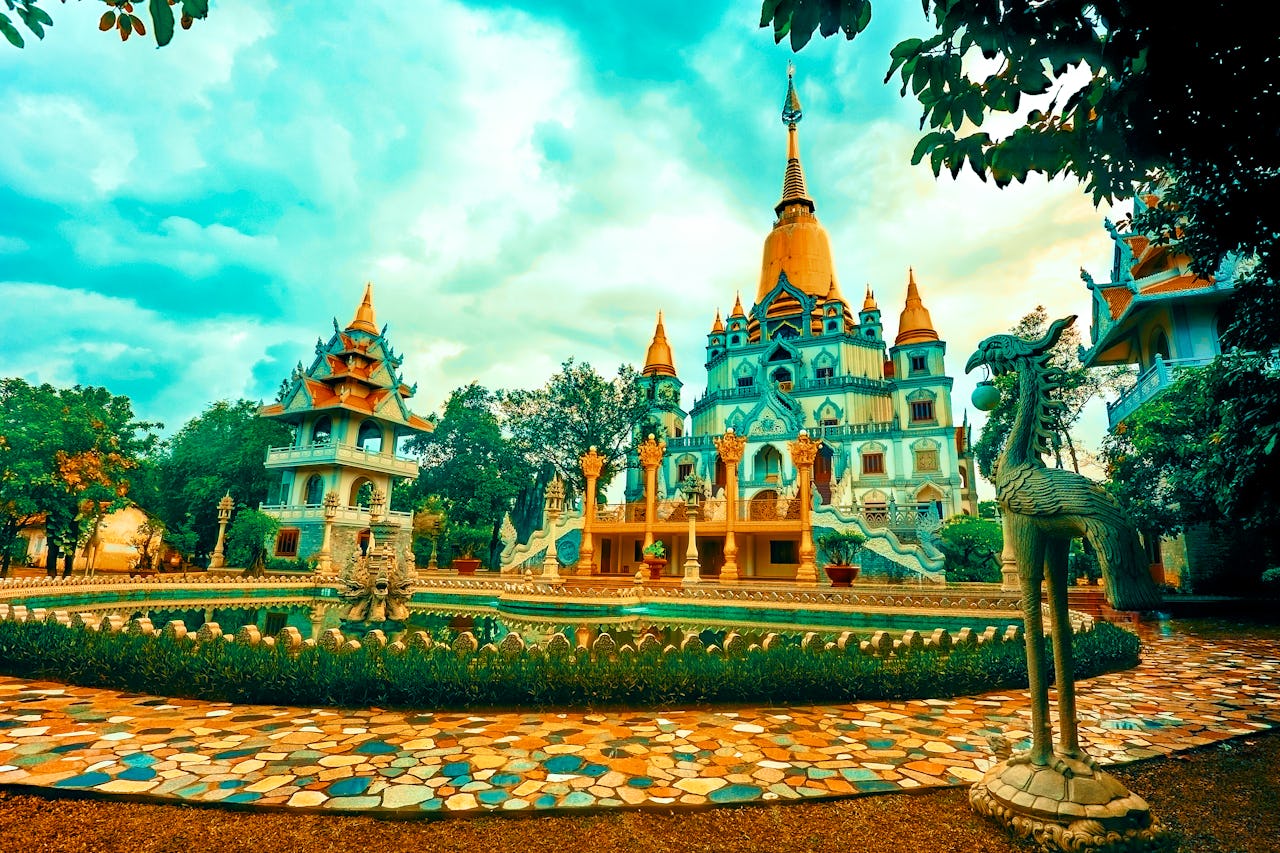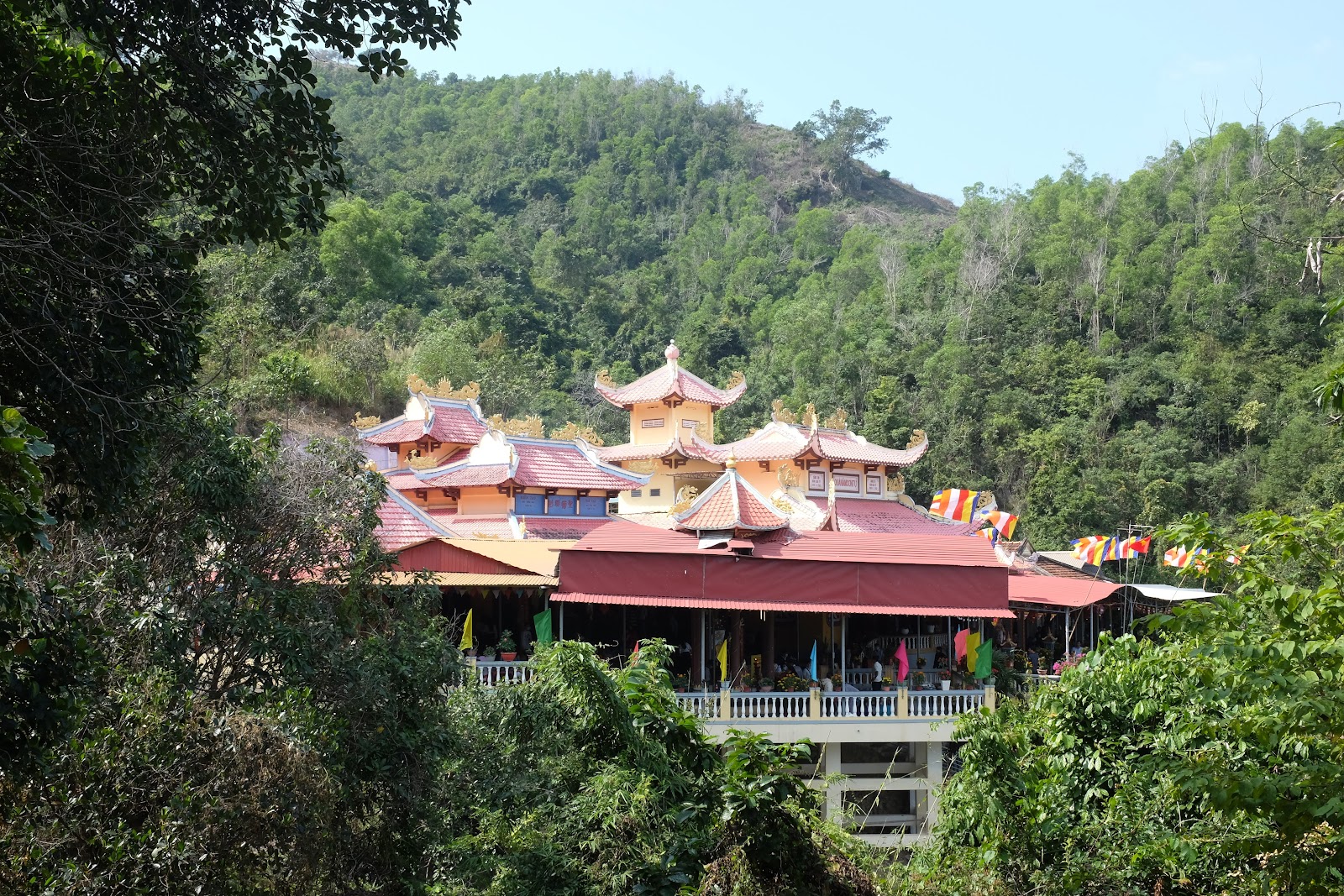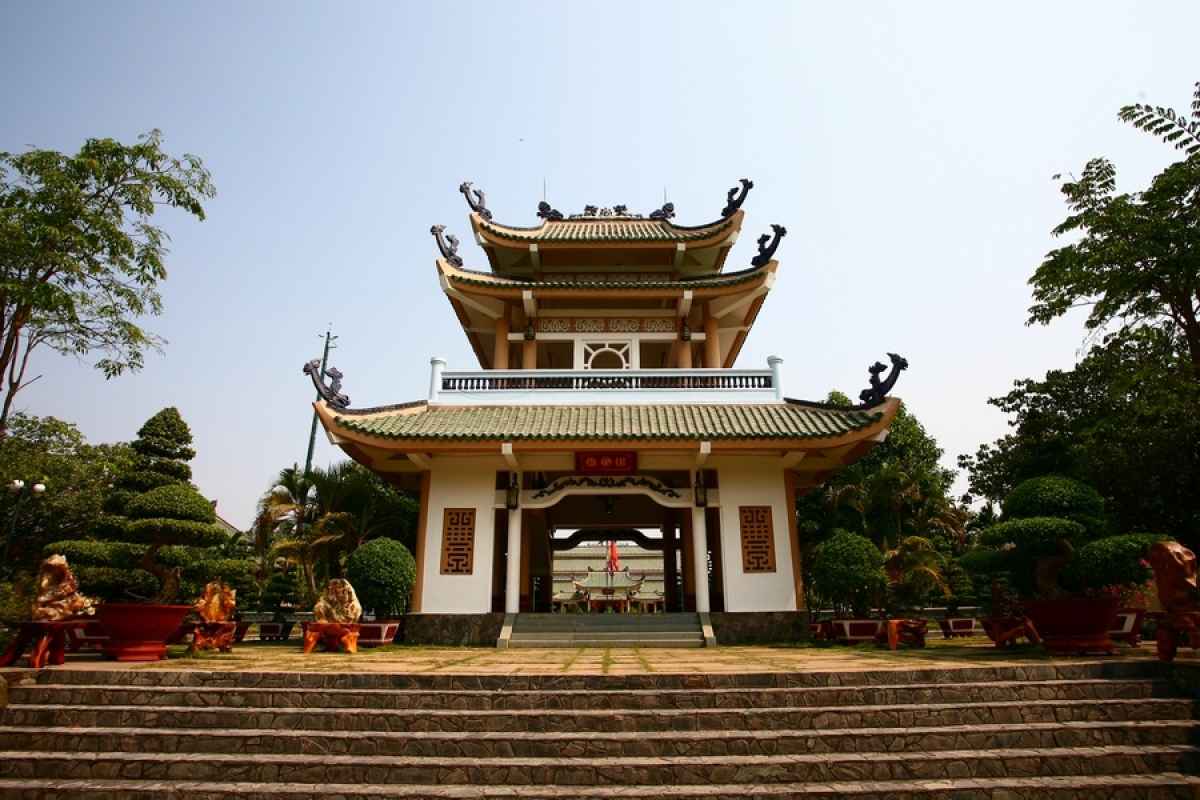- 1 Your ride
- 2 Confirm booking
- 3 Payment
Visit these sights along the way

Buu Long Pagoda
Built in 1942, the Chua Buu Long pagoda is renowned in Vietnam because of its gorgeous amalgamation of architectural styles from countries throughout Southeast Asian including Myanmar, Thailand, and Vietnam. Many locals even call it the “Thai temple” for its distinctive style, and because it practices the same Theraveda branch of Buddhism as in Thailand. The temple is also unique in that worshippers do not use candles or incense to pray, and only the Buddha is revered here - most temples also worship other deities. Despite the ornate exterior and serene gardens, the temple interior is simple and modern, bordering on the austere. On the top floor you’ll find relics from Buddha and his disciples that are revered throughout the Buddhist world.

Fairy Stream
Flanked by vibrant red stone formations and verdant bamboo groves, the Fairy Stream is a demure natural wonder. The water, dyed red by natural sediments, is no more than knee deep, and usually barely passes the ankles, making for a picture-perfect place to cool your feet. Along the way, you’ll not only find plenty of photo opportunities, but several food stalls where you can stop to enjoy a bit to eat in this beautiful setting.

Red Sand dunes in Mui Ne
The Red Sand Dunes are located just a few kilometers from the center of Mui Ne, making them easily accessible. They are situated between Mui Ne beach and the White Sand Dunes, and are a popular stop for visitors exploring the area. As the name suggests, the Red Sand Dunes are characterized by their reddish-orange color, which makes them distinct from the White Sand Dunes. The sand gets its red hue from the iron-rich soil in the area. The dunes are smaller and more compact compared to the White Sand Dunes, but they offer a charming, picturesque landscape that’s perfect for photography, especially at sunrise or sunset when the light adds a warm glow to the red sands.

Suoi Do Pagoda
Suoi Do Pagoda is a beautiful Buddhist temple located in Nha Trang, Khanh Hoa Province, Vietnam. Perched on a mountainside and surrounded by lush forests, the temple offers a peaceful and spiritual retreat with stunning natural scenery.
To reach the temple, visitors must climb a stone staircase, passing a serene scene of streams and waterfalls, giving rise to the temple's name—"Suoi Do" meaning "Waterfall Stream". The temple is dedicated to Bodhisattva Avalokiteshvara, the goddess of mercy, and is a popular place for Buddhists to pray for blessings and good fortune.
From the top, visitors can enjoy breathtaking panoramic views of the surrounding countryside and coastline. The combination of natural beauty and spiritual atmosphere makes Suoi Do Pagoda a must-see destination for visitors seeking peace, contemplation, and connection with nature.

Tran Bien Temple
Tran Bien Temple of Literature is a historical and cultural relic in Bien Hoa, Dong Nai, Vietnam. Built in 1715 under the Nguyen Lords, it was the first Temple of Literature in southern Vietnam, modeled after the Temple of Literature in Hanoi. The site honors Confucian scholars, national heroes, and cultural figures, symbolizing Vietnam's dedication to education and learning. Restored in 1998, Tran Bien Temple of Literature is now a place for cultural activities, traditional ceremonies, and historical appreciation. Its elegant architecture and peaceful surroundings make it an important landmark in southern Vietnam.

Van Thuy Tu Temple
Believe that whales protect fisherman from perils at sea, the locals built the Van Thuy Tu Temple in 1762 in honor of Ca Ong (Lord Whale). The largest and oldest ‘whale temple’ in the region, the remains of over 500 whales are preserved within, including a 22-meter-long specimen that’s believed to be the largest in South East Asia. Displayed alongside these century-old skeletons are traditional fishing boats, conical hats, and authentic artifacts from the 18th century including written decrees by 24 former kings, terracotta statues, and incense table, lacquered boards, and an beautiful bronze bell. While the entrance fee includes a guided tour of the temple, if you’re lucky, your visit will coincide with the Spring Festival, Whale Worshipping Festival, or Peace Prayer Ceremony when locals come to pray for smooth sailing, good weather, and a bountiful fishing harvest in an activity-filled day.

White sand dunes in Mui Ne
The White Sand Dunes (also called Bau Trang) are vast stretches of white, powdery sand that create an almost desert-like landscape. They are located about 25 kilometers northeast of Mui Ne, and they’re one of the largest sand dunes in Vietnam. The dunes themselves are quite stunning and stretch over a large area, offering breathtaking views, especially at sunrise or sunset when the light hits the sand, creating beautiful colors and shadows.
Risk-free
You can cancel your booking up to 24 hours before departure and get a full refund.
English-speaking driver
Door-to-door service
Sightseeing along the way
Smoke-free
Clean, comfortable car
Air conditioning
Child seats
Pet-friendly
Handicapped accessible
